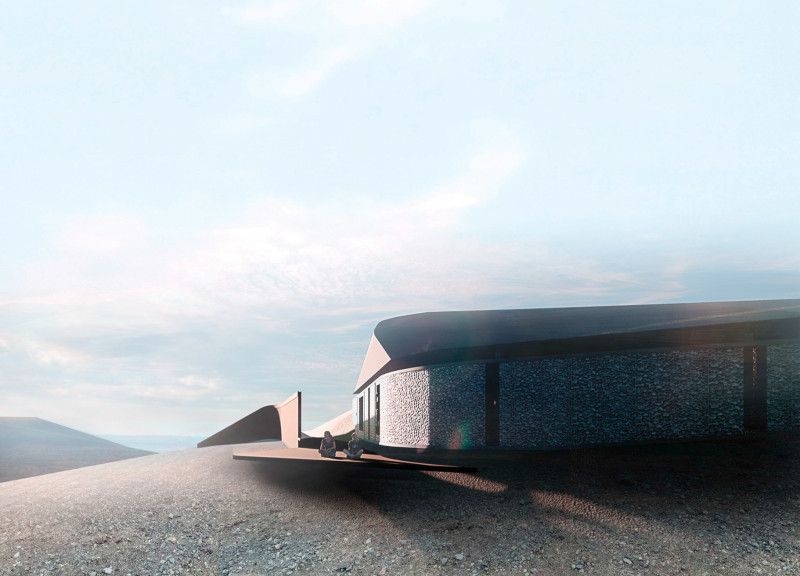5 key facts about this project
The Hverfjall Lookout Point is located within the striking landscape of the Hverfjall volcanic crater, offering views of the Dimmuborgir Lava fields and Lake Mývatn. The design enhances visitor experiences while also serving as a space for research focused on the environmental systems and potential for life in extreme conditions. The aim is to create a connection between people and the surrounding landscape through a thoughtful architectural approach.
Architectural Form
The platform of the lookout point features a folded design that fits snugly into the topography. This shape allows for multiple viewing angles, encouraging visitors to appreciate their surroundings from different perspectives. The elevated position helps reduce visual impact while ensuring access to the stunning views both day and night.
Wall Construction
Supporting the platform are walls designed with minimal disturbance to the landscape. They utilize local Tephra, which is incorporated in two forms: a rammed earth wall made through formwork and a gabion wall that uses natural materials. This method aligns the structure with the geological features of the area. By relying on local resources, the design makes a conscious effort to practice sustainability.
Functional Spaces
The layout includes spaces for researchers, accommodating their specific needs. These areas allow for the safe storage of tools, provide sleeping quarters, and facilitate collaborative work. By focusing on functionality, the design promotes interaction among users while ensuring they can effectively engage with the unique environment.
Material Response
The choice of materials is important for the project’s interaction with its surroundings. Timber is used for the folded platform, treated to withstand weather changes and resist heat. This selection ensures the platform is durable and visually aligns with the natural environment. The thoughtful use of local materials contributes to the overall design, emphasizing a connection to the landscape.
Attention to detail in the design fosters an inviting atmosphere, encouraging visitors to explore and immerse themselves in the natural beauty of the region.



















































